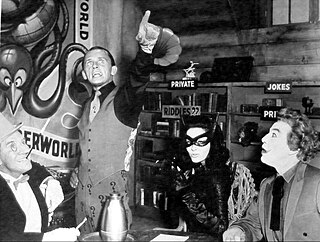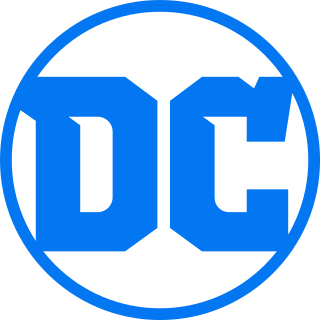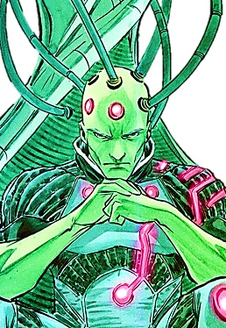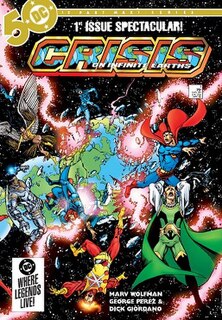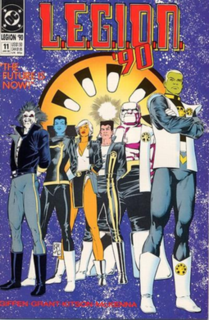
Vril Dox, also known as Brainiac 2, is a fictional character published by DC Comics. He first appeared in Superman #167, and was created by Edmond Hamilton, Cary Bates, and Curt Swan.
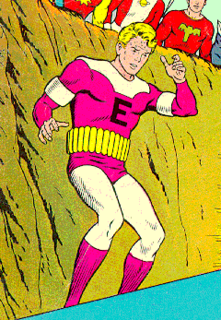
Element Lad is a fictional character in the 30th and 31st centuries of the DC Comics Universe, a member of the Legion of Super-Heroes. A native of the planet Trom, he has the power to transmute chemical elements.
Brainiac 4 is the name of two fictional characters in the DC Universe.

Rene Jacques "R. J." Brande is a fictional DC Comics character in the 30th and 31st centuries with the Legion of Super-Heroes. He first appeared in Adventure Comics #350 and was created by E. Nelson Bridwell.

The Miracle Machine is a fictitious device in the DC Comics universe. The machine first appeared in Adventure Comics #367, April 1968.

Revolutionary Elite Brigade to Eradicate L.E.G.I.O.N. Supremacy (R.E.B.E.L.S.) is the name of two separate fictional revolutionary paramilitary groups in the DC Comics Universe. Both incarnations have been L.E.G.I.O.N. adversaries and are led by Vril Dox.
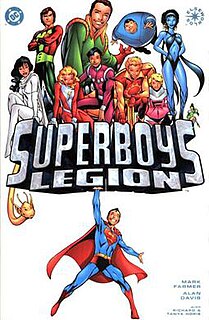
Superboy's Legion is a two-issue comic book mini-series, published by DC Comics cover dated February and March 2001, under the Elseworlds imprint. Written by Mark Farmer, with art by Farmer and Alan Davis. The comic series is a tale about the baby Kal-El, the last survivor of the doomed planet Krypton, arrives on Earth in the 30th century and is found by billionaire R.J. Brande. As Kal grows up, he decides to find other super-powered teens like himself and form a Legion of Super-Heroes. The story uses elements from the Silver Age Comics, most notably from the original Legion of Super-Heroes series.
Glorith of Baaldur is a fictional character appearing in stories published by DC Comics. Her primary foe is the 30th century team known as the Legion of Super-Heroes, and she was a major presence in Volume 4 of the Legion of Super-Heroes title -- during the "Five Years Later" era of Legion continuity. Originally a minor villain who made one appearance in the 1960s, Glorith became a central figure in DC's attempts to repair the continuity problems created when it removed the original Superboy from continuity following the Crisis on Infinite Earths miniseries.

"The Great Darkness Saga" is a five-issue American comic book story arc featuring the Legion of Super-Heroes. It was written by Paul Levitz, with art by Keith Giffen and Larry Mahlstedt. Published by DC Comics in 1982, the arc first appears in Legion of Super-Heroes vol. 2, #290–294. It is notable for featuring appearances by virtually every living past and present Legionnaire as of 1982, as well as most of the team's 30th-century allies, including the Legion of Substitute Heroes, the Wanderers, the Heroes of Lallor, and the 20th-century Kryptonian refugee Dev-Em. The heroes battle an immensely powerful being shrouded in darkness, ultimately revealed to be the ancient ruler of Apokolips, Darkseid.
"The Greatest Hero of Them All" is a story arc that was published by DC Comics, and presented in Superman vol. 2, #8, Action Comics #591, and Legion of Super-Heroes vol. 3, #37–38 from August through September 1987. It was written by Paul Levitz and John Byrne, and pencilled by Byrne, Greg LaRocque and Mike DeCarlo. The story arc was DC’s first attempt to correct the inconsistencies in Legion history created when the original Superboy was removed from mainstream DC continuity in the Man of Steel limited series.

Richard Kent Shakespeare, occasionally codenamed Impulse, is a fictional character in the DC Universe. He became a member of the Legion of Super-Heroes in the 30th century, during the "Five Years Later" era. Prior to New 52 continuity, he was the Superman of the 31st century.
"End of an Era" is an American comic book story arc that was published by DC Comics, and presented in Legion of Super-Heroes vol. 4, #60-61, Legionnaires #17-18, and Valor #22-23. It was written by Mark Waid, Tom McCraw and Kurt Busiek, with pencils by Stuart Immonen, Ron Boyd, Chris Gardner and Colleen Doran. A tie-in to the Zero Hour: Crisis in Time miniseries, it is the final story arc in the Legion of Super-Heroes' original timeline, and marks the end of 36 years of unbroken Legion continuity.
"The Exaggerated Death of Ultra Boy" is a story arc that was published by DC Comics, and presented in Legion of Super-Heroes vol. 2, #273–275 and #277–282. It was written by Gerry Conway, Roy Thomas and Paul Levitz, with pencils by Jimmy Janes and Steve Ditko. It depicts the long odyssey of Ultra Boy, who is incorrectly presumed to be slain in battle.
